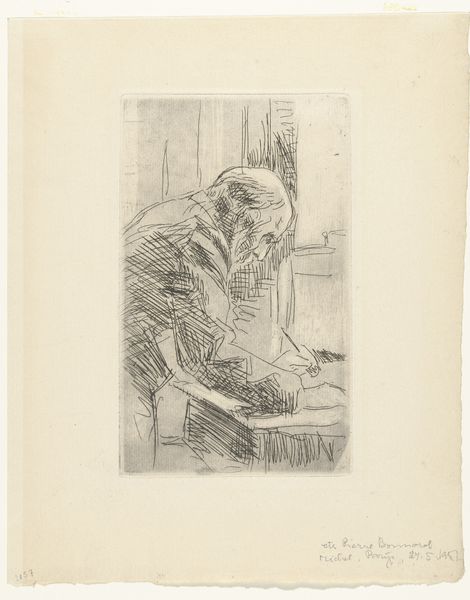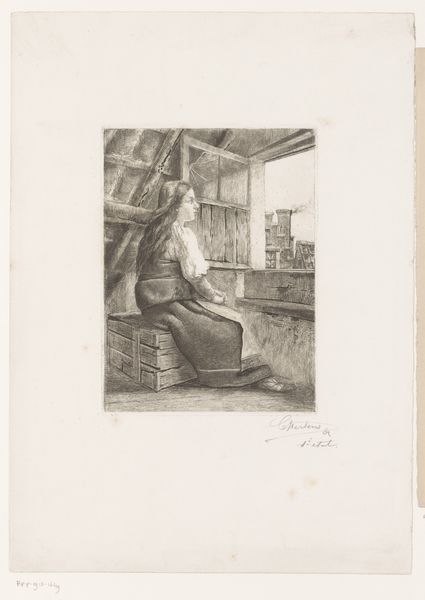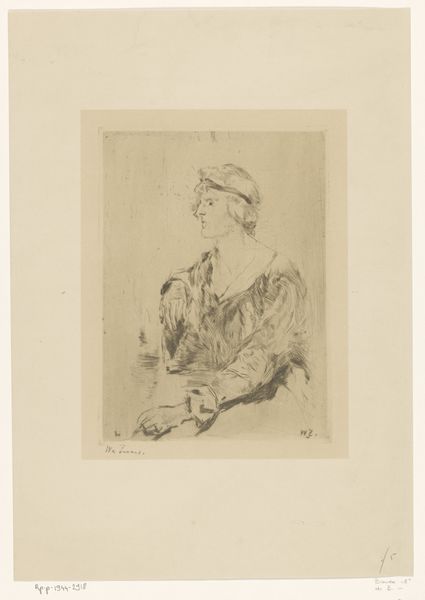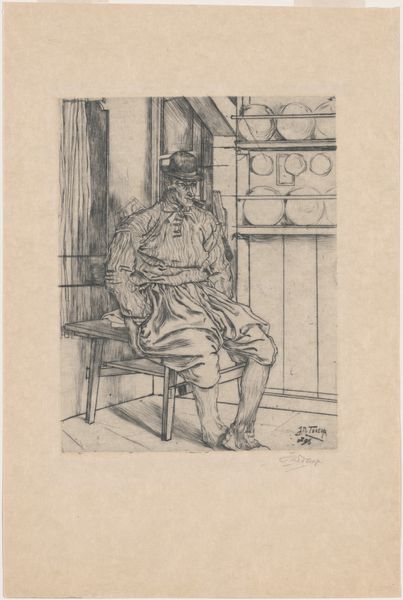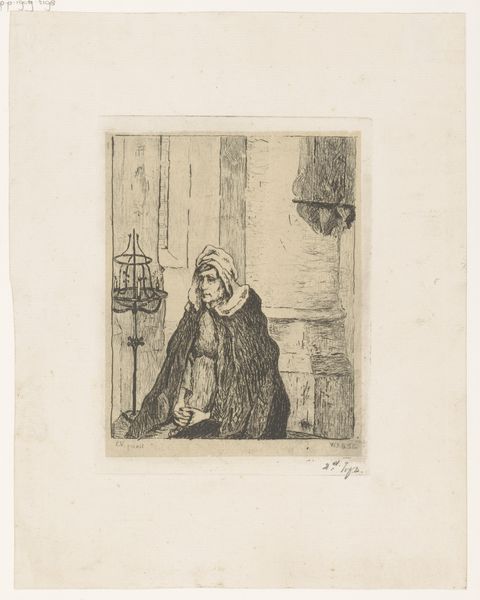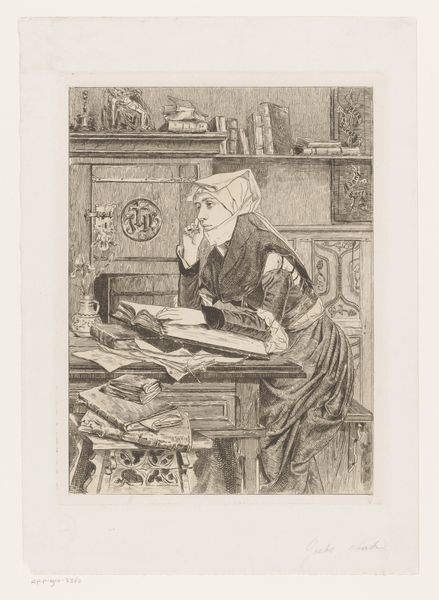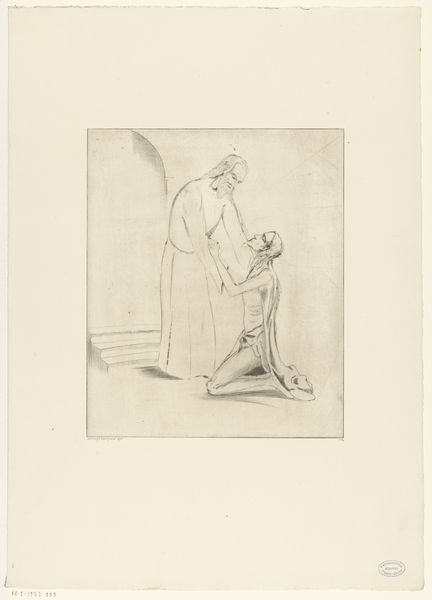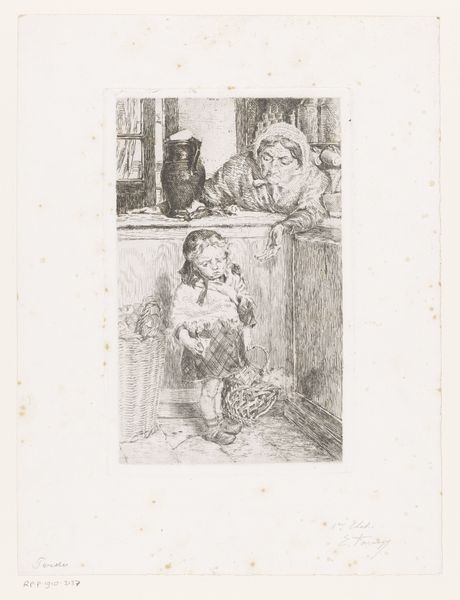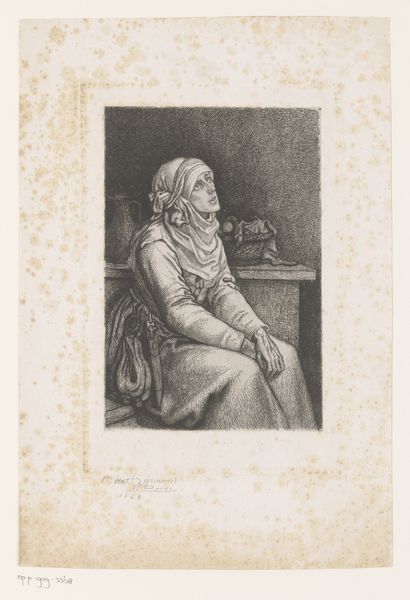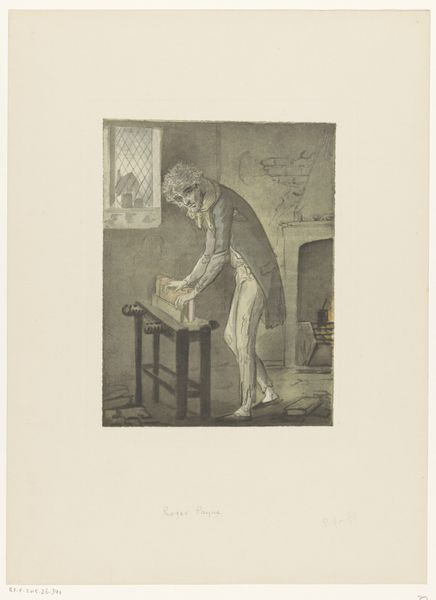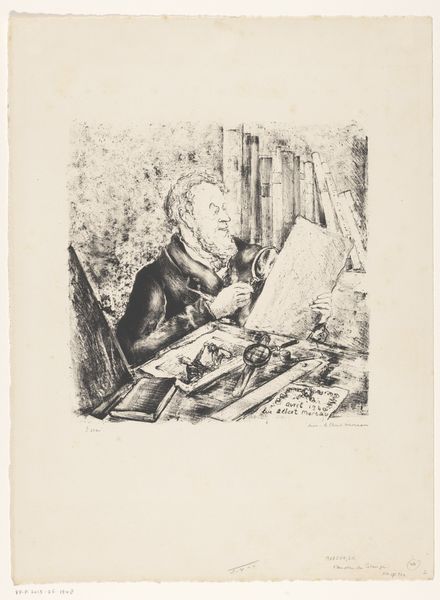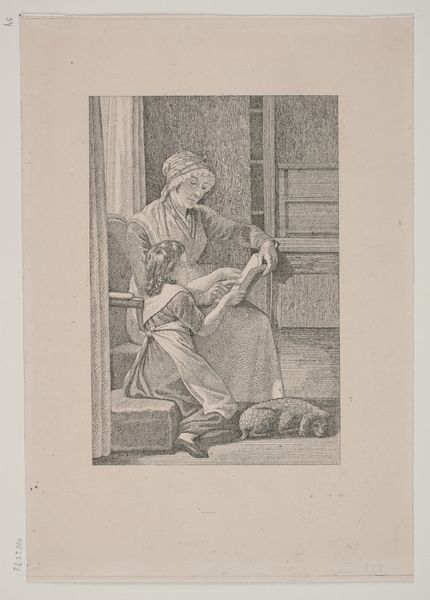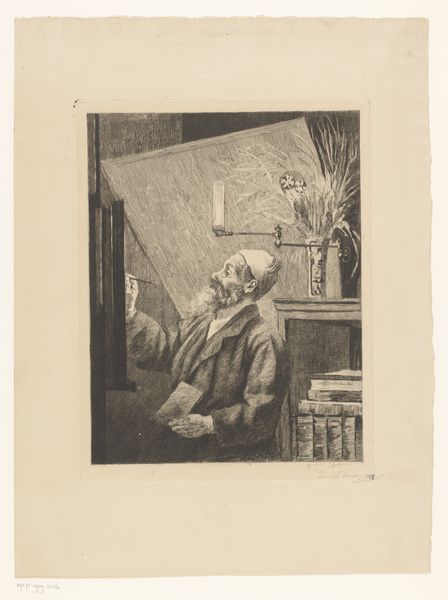
drawing, etching, paper
#
portrait
#
drawing
#
etching
#
paper
#
italian-renaissance
#
italy
Dimensions: 482 × 320 mm
Copyright: Public Domain
Curator: What strikes me immediately is the delicate rendering. This is "La Signora Sacchi," an etching on paper crafted in 1907 by Umberto Boccioni, presently residing here at The Art Institute of Chicago. Editor: Etching... so, acid eating away at a metal plate, right? It feels fragile, almost spectral, but I also see this really grounded person, perhaps someone from the working class. The visible textures bring forth the raw nature of the printmaking, the hand and labor involved. Curator: Boccioni was indeed invested in depicting modern life, although his involvement with Italian Renaissance connects this portrait with a classical artistic heritage and artistic legitimacy that elevated contemporary subjects into timeless studies of character. His engagement with depicting marginalized people was part of a broader trend among Italian artists looking to portray Italy’s national character in real, unvarnished terms. Editor: So this etching functions in a pretty different context from painting... it opens possibilities in reproducibility that make art available and accessible to the broader culture? I wonder how Boccioni used that... given his avant-garde engagement with capturing light, he seems also pretty invested in technique. How does this technique help to represent modern society through these visual choices? Curator: That's a critical question. While Boccioni embraced modernity, particularly Futurism's emphasis on dynamism and technology, "La Signora Sacchi" shows a clear, almost reverential gaze upon older generations who are so much part of that culture... that she embodies and creates through labour. Etchings, while reproducible, still retained an aura of the artist’s touch—connecting the masses not only through subject matter but artistic process. The subject is so rooted into labor, that to reproduce it makes available the social dignity that exists. Editor: Hmm, so the lines here – etched through what looks like laborious and repetitive, crosshatching, – convey this sense of enduring quality or presence through that visual touch. This technique emphasizes process to connect to the lives of common people… So powerful that what persists is the feeling of connection through material that, now that I consider it, I had to think about what it stood for socially to create it. Curator: Exactly. It bridges traditional artistic skills with social relevance. So often art and history overlook figures exactly like this in order to valorize authority in one way or another; Boccioni is consciously resisting in that he chooses this woman as a figure who persists, etched indelibly into the culture. Editor: Incredibly well put. To consider not just her presence in the scene but what it must have stood for, what means were behind creating such image really shifted everything about how I understand this portrait. Curator: Indeed, it showcases that every subject in a portrait contains entire worlds that go beyond that captured instant.
Comments
No comments
Be the first to comment and join the conversation on the ultimate creative platform.
